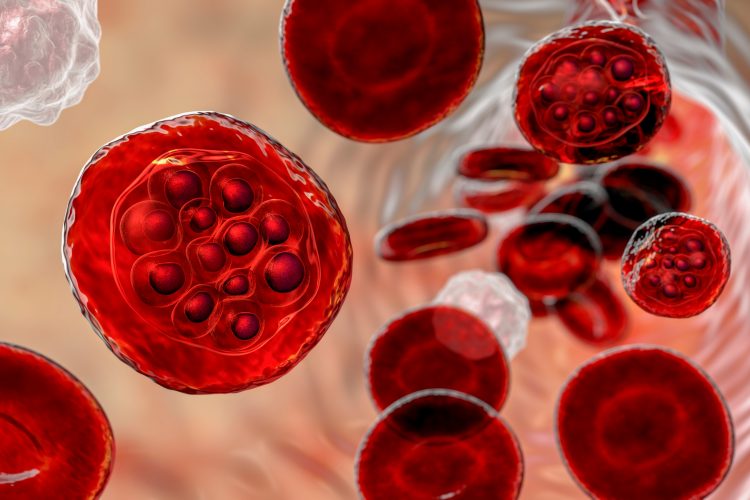Malaria unravelled: decoding the parasite’s gene expression control
Posted: 24 July 2023 | Professor Kan Tanaka | No comments yet
Researchers from Tokyo Tech’s World Research Hub Initiative conducted a study to investigate the regulation of gene expression in the apicoplast of the malaria parasite Plasmodium falciparum.

Researchers from Tokyo Tech’s World Research Hub Initiative conducted a study to investigate the regulation of gene expression in the apicoplast of the malaria parasite Plasmodium falciparum. The results were published in Proceedings of National Academy of Sciences of United States of America (PNAS). The team, led by Professor Kan Tanaka, collaborated with scientists from Nagasaki University and the John Innes Centre in the UK. Through phylogenetic analysis and microscopy techniques, they identified a nuclear-encoded apicoplast RNA polymerase σ subunit called ApSigma. They observed that ApSigma, along with the α subunit, likely plays a role in coordinating apicoplast transcript accumulation, which aligns with the developmental control of the parasite.
Notably, the presence of melatonin, the circadian signalling hormone in the host’s blood, increased apicoplast transcription and expression of the apicoplast subunit gene, apSig. These findings shed light on an evolutionarily conserved regulatory system that integrates the host’s circadian rhythm with intrinsic cues from the parasite, ultimately influencing genome transcription in the apicoplast. The study suggests that this regulatory system could be a potential target for future malaria treatments, offering hope for combatting this deadly disease that affects millions worldwide.
sufB gene for the Fe-S cluster assembly has been essential for the apicoplast-specific function: isoprenoid biosynthesis
We have exclusively interviewed Professor Kan Tanaka to find out more about this study. He has shared his excitement about the study’s implications and how it opens up new avenues in malaria research. With this newfound knowledge, there is renewed hope in the pursuit of effective malaria treatments alleviating the suffering of millions affected.
What is the main focus of the recent study conducted?
The initial subject of my research carrier was RNA polymerase principal sigma factors in bacteria. The principal sigma factor is located at the centre of bacterial cell regulation, and the framework of general environmental responses in bacteria is still one of the main research focuses of my team. During the sigma factor analyses, I found that RNA polymerase sigma factors working for the chloroplast transcription are encoded by the nuclear genome. This finding was extended to the research of the organelle-nucleus communication and also connected to the present finding of the nuclear-encoded sigma factor in Plasmodium apicoplast.
What is the role of the apicoplast in the malaria parasite Plasmodium falciparum?
The apicoplast genome does not encode many genes, and most of those genes are related to apicoplast gene expression. Other than this category, sufB gene for the Fe-S cluster assembly has been essential for the apicoplast-specific function: isoprenoid biosynthesis. Isoprenoid biosynthesis is mediated by the MEP pathway in apicoplast, which is essential for parasite proliferation. Other than essential cellular processes are likely occurring in the apicoplast compartment.
How did the researchers identify a nuclear-encoded apicoplast RNA polymerase σ subunit in the study?
The first identification was based on a bioinformatic analysis. A detailed similarity search of the Plasmodium genome-encoded proteins picked up the candidate and recent in silico structural analysis such as AlphaFold2 strengthens the identity as being the bacteria-type RNA polymerase sigma factor. In addition, we have concluded that the gene product is an apicpolast RNA polymerase sigma factor because of the localisation of the gene product, ApSIGMA, in the apicoplast interaction with apicoplast promoter DNA sequences, and the activity of an ApSIGMA-E.coli_RpoS chimeric sigma factor protein.
How is melatonin, the circadian signalling hormone, related to the regulation of gene expression in the apicoplast?
Melatonin is recognised by a putative melatonin receptor located at the parasite’s cell membrane and activates the nuclear ApSIGMA gene expression through the cAMP-dependent pathway. The ApSIGMA gene product, an apicoplast RNA polymerase sigma factor ApSig, is imported into the apicoplast after the translation in the parasite cytosol and activates transcription from the apicoplast genome.
What does the study suggest about the coordination between the host’s circadian rhythm and the parasite’s intrinsic cues in regulating genome transcription?
In this study, we have connected the extracellular melatonin with the apicoplast transcriptional activation. This suggests that extracellular melatonin rhythm can be directly connected to transcription in the apicoplast. On the other hand, because the parasite proliferation cycle is synchronised with the host after infection, it would be reasonable to consider that the parasite-intrinsic rhythm is also synchronised with the melatonin cycle. However, the underlying mechanism remains elusive and the presently found apicoplast regulation may give insights into the missing link.
According to Professor Tanaka, what are the future implications of this research in terms of malaria treatment?
Apicoplast is performing essential functions in the parasite lifecycle and thus has been considered an important target of anti-malarial drugs. Meanwhile, the relationship of apicoplast to the parasite’s intrinsic oscillation has not been known, therefore, the present finding may provide novel drug targets disturbing the apicoplast-related intracellular signalling.
Author Bio:
 Kan Tanaka
Kan TanakaRelated topics
Drug Discovery, Drug Discovery Processes, Drug Leads, Drug Repurposing, Gene Testing, Gene Therapy, Genome Editing, RNAs
Related conditions
Malaria
Related organisations
Tokyo Tech's World Research Hub
Related people
Professor Kan Tanaka







